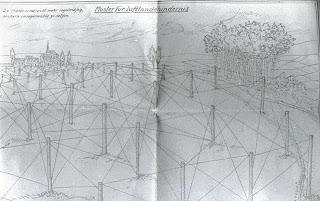Gliders?

This is coolbert:
Is there a military future for the glider?
Gliders were used extensively by the German and Allied paratroop forces during World War Two [WW2]. Offered an alternative to the mass parachute drop of highly trained infantry on a drop zone well behind enemy lines.
[even with the intense physical training administered to parachute troops, a pretty high percentage still suffer some sort of injury upon landing, due to the heavy load they must carry! Even BEFORE engaging in combat, a unit will suffer a certain percentage of casualties!]
Towed by a transport or bomber aircraft to the landing zone, gliders allowed for an entire unit to be delivered intact on one location and with fewer casualties than would occur by parachute landing.
"Landing by parachute caused the troops to be spread over a large drop-zone, whereas gliders could land troops in greater concentrations precisely at the target landing area. Furthermore, the glider, once released at some distance from the actual target, was effectively silent and difficult for the enemy to identify."
Gliders as used by the warring parties during WW2 were generally considered to be EXPENDABLE ITEMS!! Used once behind enemy lines and then written off. Made of wood, covered by fabric, subject to damage upon landing in an unimproved field or even from enemy ground fire.
[Rommel’s asparagus was widely employed in Normandy to thwart glider landings by the Allied paratroop forces. Poles with wire strung between them, trip wired explosives and mines, all placed in fields that were judged by the German to be suitable for allied glider landings. There was a pretty high casualty rate among glider crews and troops carried within during the Normandy airborne operation?]

Gliders continued to be carried in the U.S. military inventory even until the mid-1960’s? At that time, were then considered to be obsolete, replaced by the rotary-wing helicopter. Helicopters were felt to be more flexible, ABLE TO DISEMBARK TROOPS ON A LANDING ZONE MORE EFFECTIVELY, AND ALSO RETRIEVE TROOPS AS WELL!!
"By the time of the Korean War, helicopters had replaced gliders. Helicopters have the advantage of being able to extract soldiers, in addition to delivering them to the battlefield."
The helicopter has TOTALLY replaced the glider as a means of delivering troops?
Perhaps NOT!
I can see a need for a LIMITED NUMBER of gliders to be used in selective special operations type missions. Missions that require glider-borne ranger/commando troops to be carried VERY or EXTREMELY long-distances over DENIED territory, towed by transport aircraft [MC-130 or AC-130], delivered to the target [landing zone] in a stealthy manner that a helicopter cannot hope to duplicate.
A limited number of glider aircraft could be very quickly added to the inventory, at the ready for special operations troops to use when needed.
Gliders along the lines of the British WW2 Horsa. Able to carry about a platoon of troops with impedimenta. A glider made of wood, with improvements, i.e., key critical structural components made of carbon fiber in the manner of modern aircraft.

[there are all sorts of after-action reports and glider pilot veterans from the era of WW2 that can be consulted regarding “how-to” improvements?]
A force of gliders, ready-to-go, with trained pilots can be readily assembled, cheaply, and be operational in short order?
* Pilots receive continual checkout and training in simulators or modified two-engine aircraft. Modified aircraft [by NASA] simulating the performance in flight of a glider. [Space Shuttle pilots currently practice landings in this manner!] An abundance of pilots, Army and Air Force, would be willing and able would “go for” this type of mission?

[those pilots should be prepared to FIGHT upon landing. Such will be the nature of glider-borne troop missions!]
* Towed to a landing zone by a USAF Special Operations MC-130 or AC-130 gunship. Troops on the ground after glider landing will have an enormous amount of fire support at their beck and call.
* Able to be retrieved via a towline attached to a STARS type system. Also have a capability for enhanced take-off during any stage of mission via JATO [jet-assisted-take-off] or similar apparatus?
[see an interesting wiki entry regarding German attempts to strap rockets on gliders.]
* Able to take-off and land on an aircraft carrier?
Gliders would be used in special operations missions such as Pegasus bridge from Normandy fame or a raid such as of the Israeli at Entebbe! A U.S. special operations force, ranger/commando type unit swoops silently out of the sky, swarming upon the enemy when and where they least expect it! This sort of thing is do-able? And NOW?
coolbert.
Labels: Gliders

0 Comments:
Post a Comment
Subscribe to Post Comments [Atom]
<< Home